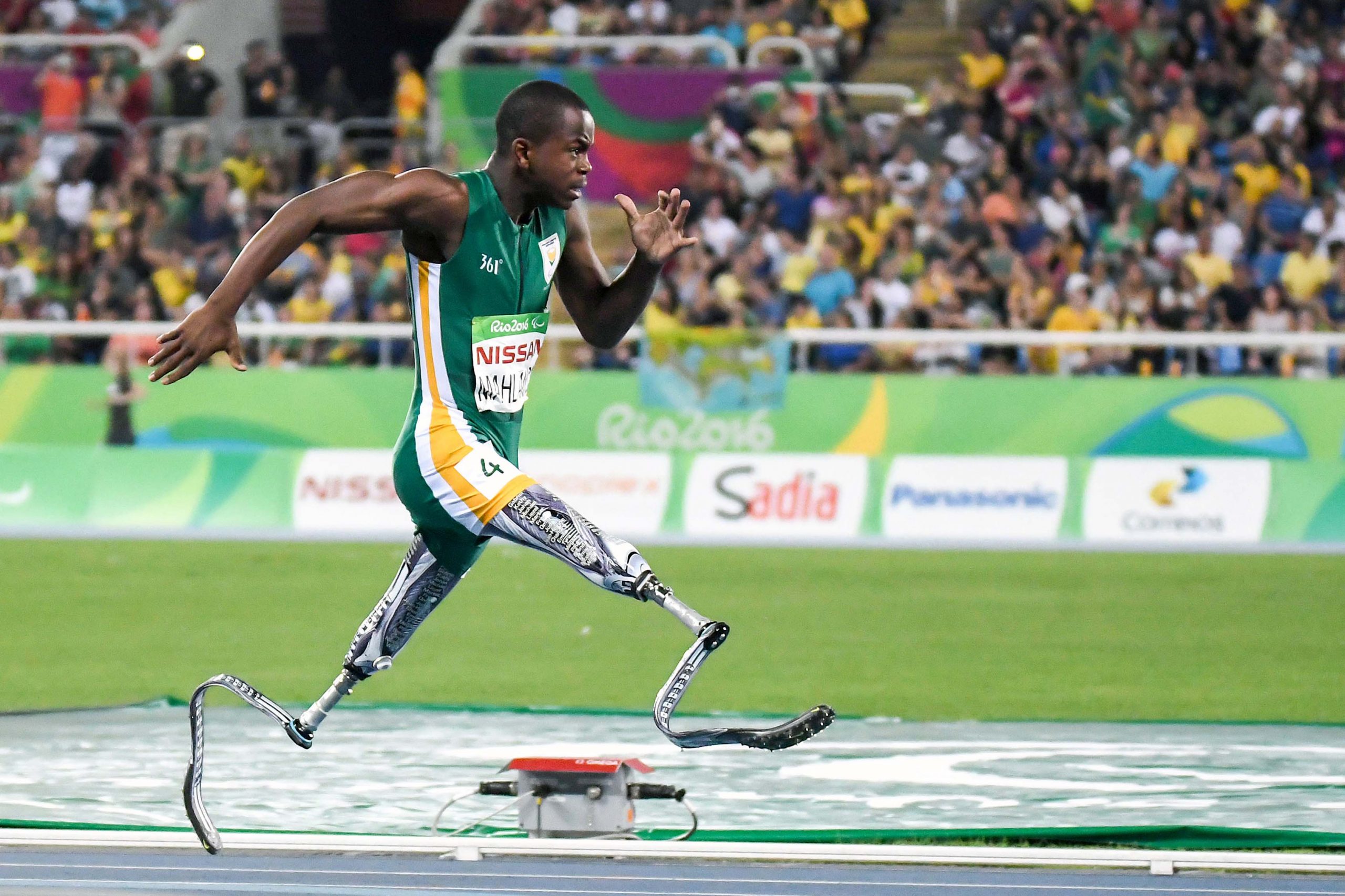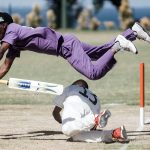Ntando Mahlangu targets double glory in Tokyo
The young South African Paralympic silver medalist defied the odds to become a worldwide champion in 2016. In Japan next year, he wants to do better than he did in Rio.
Author:
6 November 2019

Every four years something peculiar happens. For a few weeks, average South African sports fans suddenly realise there’s a world outside of football, rugby and cricket. It’s a world that encompasses some of the greatest sporting narratives: the Olympics and Paralympics.
But in the gap between those four years, one young man has been working hard to make sure his story is one that’s remembered. And, unlike his disgraced predecessor, remembered for all the right reasons.
Ntando Mahlangu’s performance three years ago at the Rio Paralympics was so remarkable it was almost difficult to believe. He spent the first 10 years of his life in a wheelchair as a result of being born with hemimelia, a short or missing fibula that hinders the development of the legs. Then, in the space of four years, he underwent a bilateral through-knee amputation, learnt to walk for the first time, then run, earned a place on the South African Paralympic team and raced to a silver medal in the T42 200m. The T42 category is for athletes with single above-knee amputations and comparable impairments.
While he made a fleeting appearance in the headlines in 2016 as the so-called “next Blade Runner”, he’s more than likely to achieve even more when the Paralympics come around again next year. He’s four years more experienced, four years further into his relationship with prosthetic blades and four years more confident in his own ability.
Related article:
“I don’t really feel any different, but I do have more experience this time around,” he says. “I think it will just help me stay focused on what I want to do and not get distracted by the size of the event and all the people competing in it.”
Before then, though, he has the World Para Athletics Championships in Dubai from 7 to 15 November, which he can use as a gauge of how far he’s come and then plot the way to Tokyo from there. He claimed silver in the 200m at the previous world championships in London in 2017, but he’s a very different athlete now.
“Preparation and the build-up this year has been good. I’m happy where I am in the build-up to the World Championships,” explains the grade 10 student from Afrikaanse Hoër Seunskool, or Affies, in Tshwane.
Tokyo targets
If it were up to him, Mahlangu would be targeting five golds in Dubai and Tokyo in 2020. But, frustratingly, there are only two events in which he can compete in his current classification of T61, the 200m and the long jump. A revision of the International Paralympic Committee’s classification system, which groups athletes according to their abilities, meant than Mahlangu changed from T42 to T61 at the beginning of 2018.
“It hasn’t affected me as a person, but it has limited the events in which I am able to compete as the 100m was dropped for World Championships and Tokyo. However, I am hoping that it is the first step to allowing more events for the various amputee classifications. We need more events to compete in to grow the sport and more chances to compete.
“If the 100m, 400m or 800m were options, I would target those as well. I am hoping these will be included in future Games,” he says.
It’s an astounding range of events for any athlete and makes one wonder just what he’s capable of. But for now, he has to focus on the 200m and the long jump, two events in which he already holds the T61 world records. His fastest 200m time of 23.03 seconds was run at the World Para Athletics Junior Championships in Switzerland in August, while he achieved his record leap of 6.47m in Stellenbosch in March.
Despite his success and the chance to claim double glory in Tokyo, Mahlangu, who hails from KwaMhlanga in Mpumalanga, is humble and modest when asked about his goals.
“I aim to do my best for my country and better my times and distances. If I can do that, the results should be positive,” he says. “I don’t feel more pressure. I’m confident in my ability to compete and don’t focus on racing anyone else but myself. My only goal is to be better than I was and to make South Africa and those who support me proud. If I can do that, I think I will do well and get good results.”
It’s hardly the hyped-up fighting talk you’d expect from some world record holders. But then he is running his own, determined course.
What prosthetics gave Mahlangu
One matter that could soon become something of an issue is Mahlangu’s impressive times in the longer track events, where he is excelling against able-bodied athletes his age and older. But the team around him won’t entertain any questions on that matter. And one hopes he won’t have to go the legal route to compete.
Mahlangu is always happy to chat about where he’s come from, giving much of the credit for his success to the Jumping Kids organisation that provided the life-changing means to become an athlete, and the Snyders family that took him in to make that possible.
“I attended a clinic at Steve Biko Academic hospital that Jumping Kids are a part of. I met Johan Snyders [the chief executive of Icexpress Progressive Prosthetics in Tshwane] and he and the doctors discussed what they would need to do in order for me to get prosthetics. I was 10 and had never walked before, so when they said there was an option for me to walk and run, I told my family that I wanted the amputation so that could happen.
“Jumping Kids then supported me through the process and with my prosthetics. They helped make it an easy decision and I have never looked back.”
Related article:
When asked how he felt just before taking his first ever steps, Mahlangu says: “I was very nervous. I actually got sick thinking about it. When I put the legs on and stood for the first time, I was unsure of everything. But I had a lot of people supporting me and it helped me get over my nerves and get used to having the legs. I walked on the first day and then each day I got better and more confident in my ability to use them.
“Everything changed. It started a new journey for me as I began to walk and be active and then Jumping Kids helped me get into mainstream schooling and into different sports competitions.
“I moved in with the Snyders to attend school and became part of a new family. I was also able to do more with my family in Mpumalanga and get outside with everyone to play soccer and be a part of the community. Getting prosthetics opened up opportunities for me that were not there before.”
As for when the racing started, he explains: “I was going with Jumping Kids and the other kids they support to events and athletics meetings. We would do exhibition races and I started to beat the others kids in the races. I was just having fun running and being a part of everything.
“Then I went to national champs and ran good times. Once I started to show talent, Jumping Kids helped me attend international competitions, where I again did well and broke my first world record. That’s when I knew I was an athlete.”
Inspirational role model
An athlete indeed. While the term “inspiring” is often patronisingly overused when describing Paralympians’ feats (they’ll tell you that themselves), it’s difficult not to be filled with admiration at Mahlangu’s achievements.
When not training, competing or studying at school to one day become an engineer or go into business, he can’t decide yet, the 17-year-old is a typical teenager.
Related article:
“I like socialising with friends. I like playing other sports and help manage a soccer team in my community when I can. I am also really into music as well, so I practise deejaying and find new music to listen to whenever possible.”
In 2017, television channel Cartoon Network selected him as their CN Buddy Network ambassador as part of an anti-bullying campaign, and it’s a role the talented teenager relishes.
“It was a surprise and honour to be included in the CN anti-bullying campaign. I have been bullied due to my disability and know how it feels to have people make fun of you. I wanted to be able to tell my story and hopefully have it help people understand that bullying is wrong and everyone deserves to be treated with respect.
“Bringing awareness to disability and the fact that just because you are different doesn’t mean people should treat you differently to how they would want to be treated was important to me and I hope it helped in some way.”
Having a champion like Mahlangu spreading that kind of message would certainly make kids take notice. And hopefully the country, and indeed the world, will take notice when he more than likely storms to glory next year in Tokyo.
Let’s make it for more than a few weeks this time.



